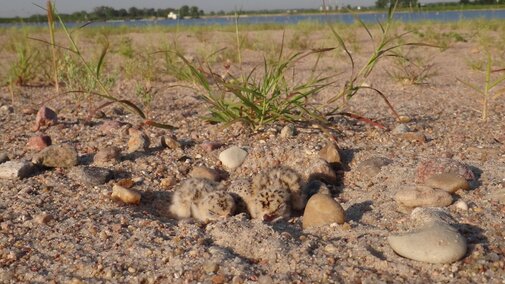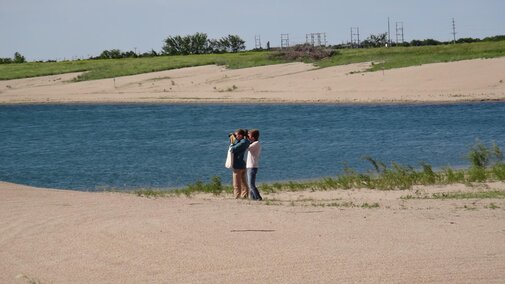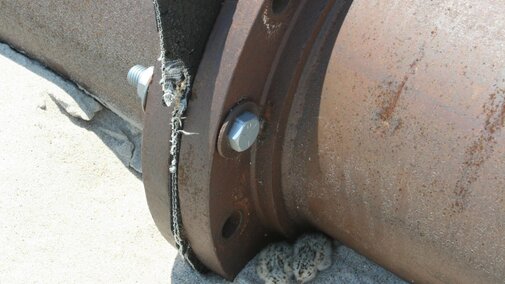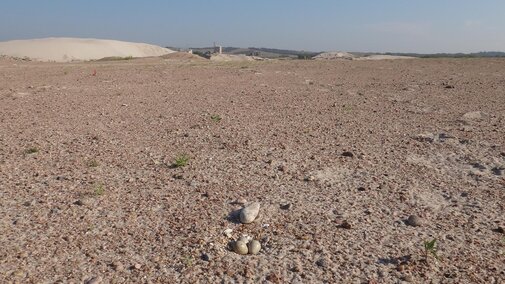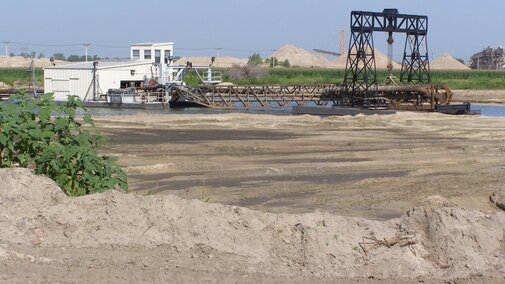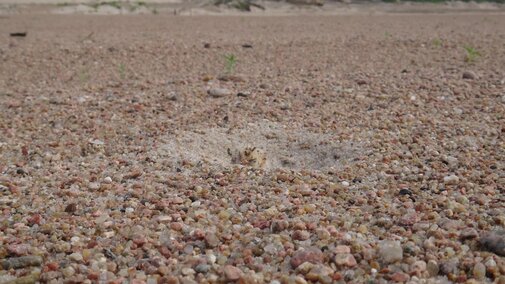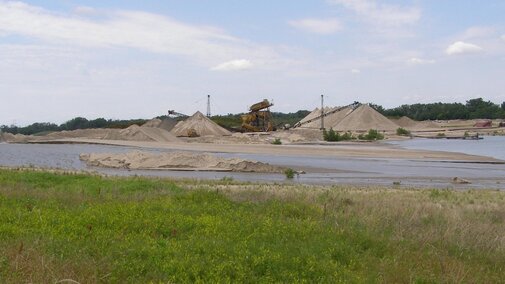As Nebraska has become more settled and river systems have become altered, there has been a loss of sandbar nesting habitat that Interior Least Terns and Piping Plovers rely on. In time the birds began to look elsewhere to nest and found that sand and gravel mines provide a prime alternative nesting habitat. Sand and gravel mining operations deposit waste sand around a center pit lake which inadvertently creates habitat for nesting terns and plovers. The large expanses of sand provide a good place to put their nests and the pit lake provides a good place for terns and plovers to feed.
The first published record of Piping Plovers nesting on sand and gravel mines was written by a Mr. Pickwell in 1925 - "On Saturday, May 20, 1922, the Nebraska Ornithologists' Union, on its annual bird hike, located a Belted Piping Plover's nest (Charadrius melodus circumcinctus) on a strip of sandy beach at Capitol Lake near Lincoln (Nebraska)." Pickwell reports that there had been dredging activity in the previous couple of years resulting in a large sloping beach of sand and gravel where two nests were eventually found. Pickwell followed the nests until they hatched.
The first report of Least Terns nesting on sand spill piles was by Ralph E. Dawson of Lincoln, Nebraska. He observed terns in at Capitol Beach Lake, near Lincoln, Lancaster County during the summers of 1920 and 1922.
Sand and gravel mines can provide suitable habitat for nesting terns and plovers but they are busy places with lots of large machinery, which can pose risks to the nesting birds. The Tern and Plover Conservation Partnership has been working with sand and gravel mining companies by monitoring the birds nesting on their property and communicating with the mining companies to prevent conflicts.

